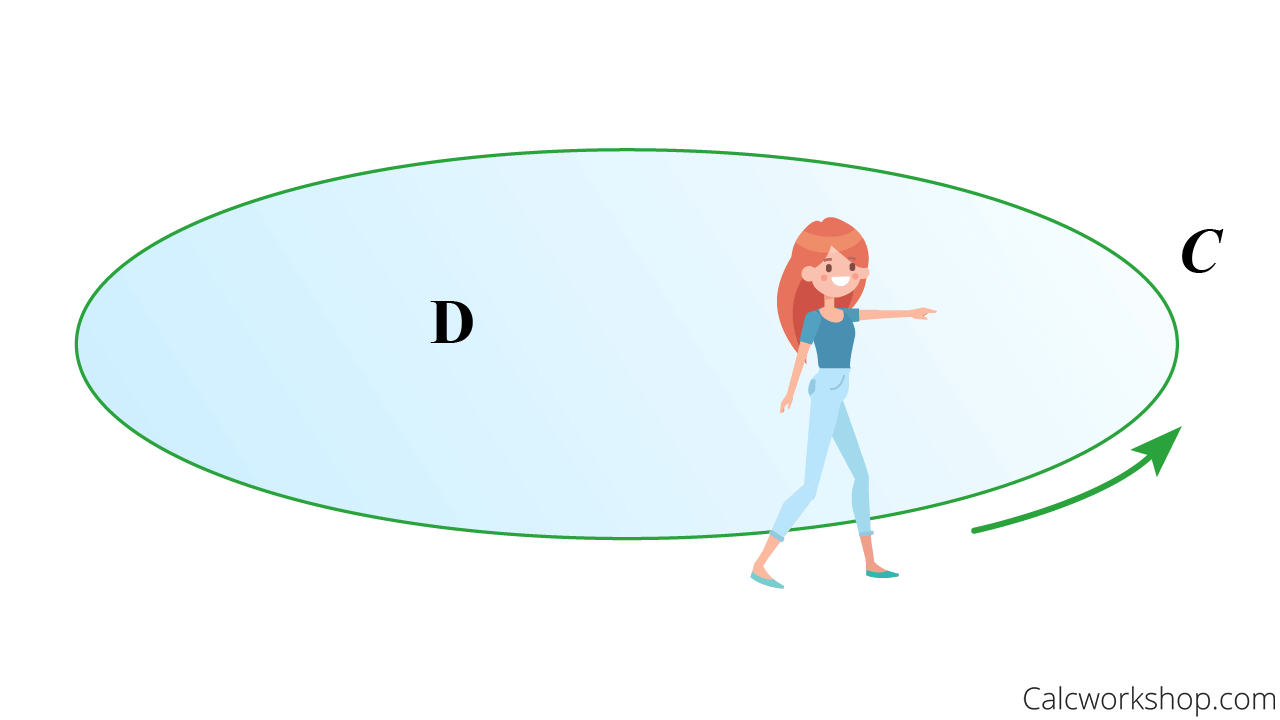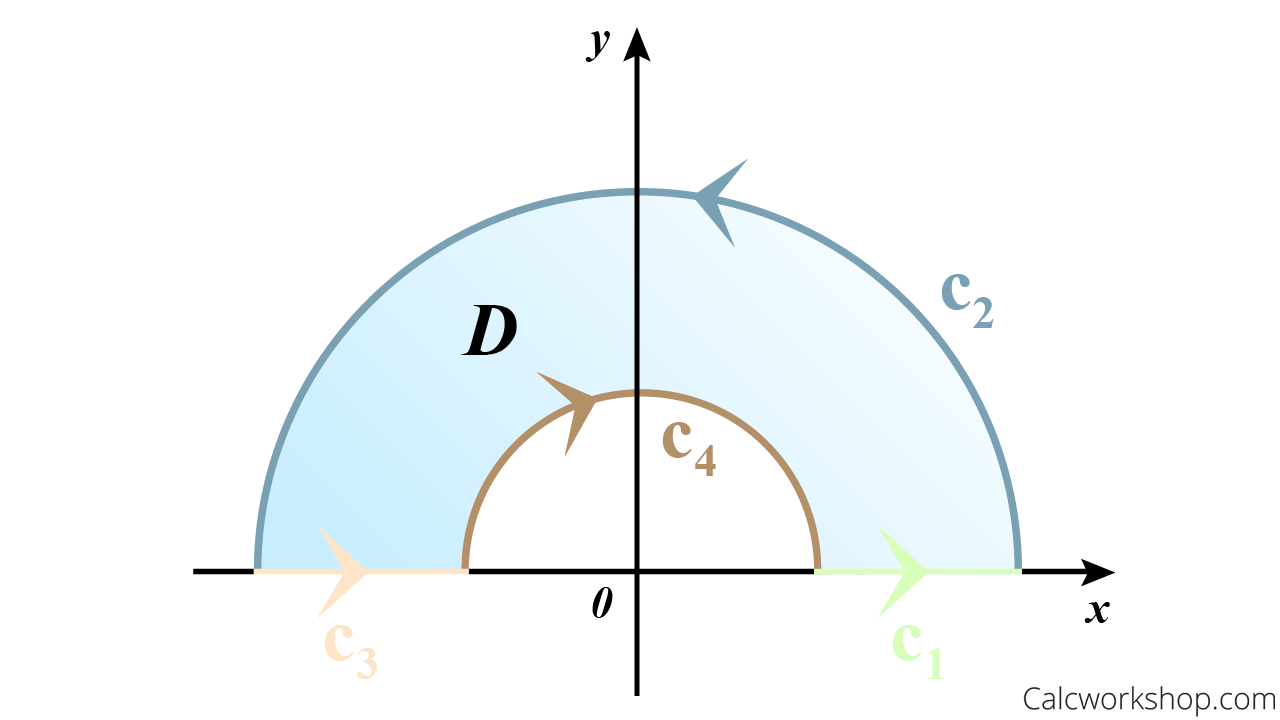What if there is a way to link line integrals around a simple closed curve and a double integral over the plane region it encloses.

Jenn, Founder Calcworkshop®, 15+ Years Experience (Licensed & Certified Teacher)
With Green’s theorem, we can!
Terminology
But before we can understand Green’s theorem and its extraordinary implications, we need to understand some important terminology fully.
A simple curve is a curve that does not intersect itself anywhere, whereas a simple closed curve is a simple curve whose initial and terminal points are the same.

Simple Curve Examples
Therefore, a region
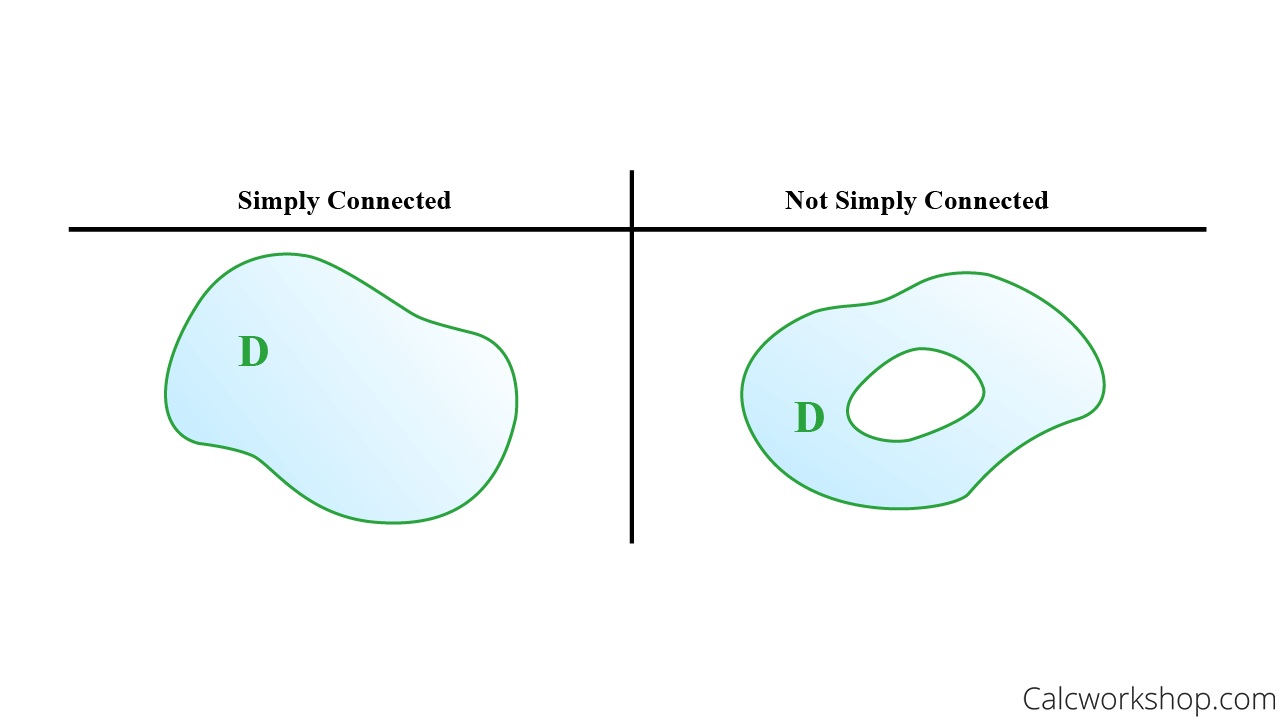
Simply Connected Regions
So, simply connected means the region is closed, simple, and without holes.
But now we have a bit of a dilemma. How do we traverse and orient ourselves when discussing a simply connected region?
In Green’s theorem, we use the convention that the positive orientation of a simple closed curve
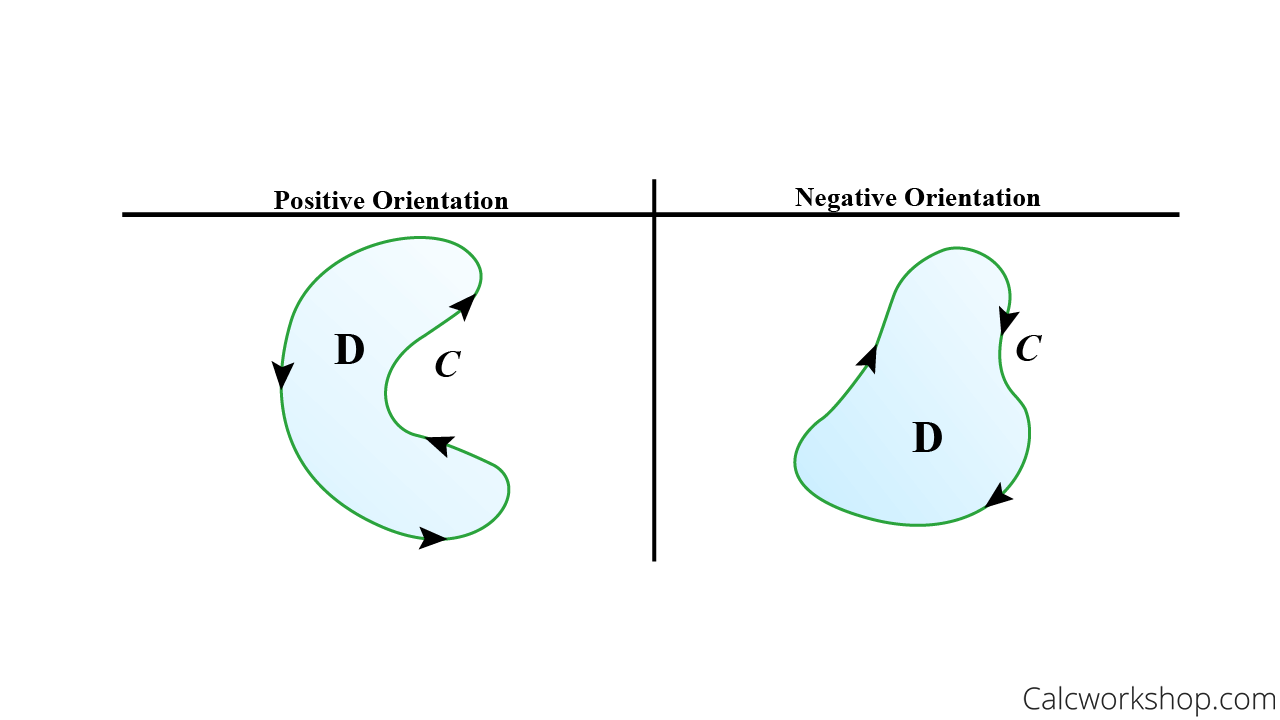
Positive Negative Orientation Curve
But sometimes, this isn’t always easy to determine, so here’s a little hint!
Imagine walking along the simple closed curve
. As long as your left hand is touching the region , you are traversing in a positive direction. Positive Orientation Left Hand Touching Curve
Green’s Theorem
Alright, so now we’re ready for Green’s theorem.
Let
And sometimes, we use the following notation to indicate that the line integral is calculated using the positive orientation of the closed curve
So, as long as the curve is closed (this is imperative in order to use Green’s theorem), we can use a double integral to evaluate a line integral!
Example
Let’s see how with an example.
Evaluate the line integral
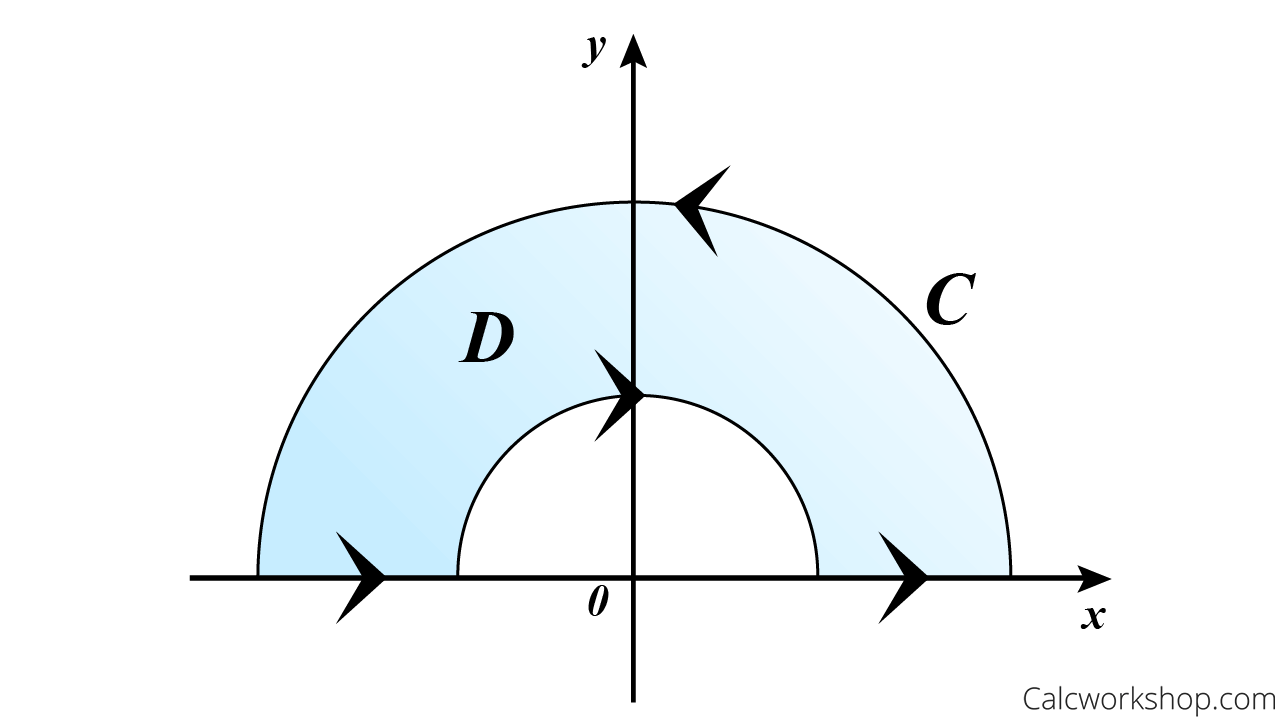
Positive Semi Annular Region
Before we go any further, we must decide how to evaluate, as there are two choices.
If we choose to evaluate using a line integral, we will need to represent
as a piecewise-smooth curve, such that: Green’s Theorem Semi Annular Region
Ugh! That looks messy and quite tedious.
Thankfully, there’s an easier way.
Because our integration notation
tells us we are dealing with a positively oriented, closed curve, we can use Green’s theorem!
First, we will find our first partial derivatives.
Thus,
Next, we will notice that it would be far easier to evaluate our double integral in polar coordinates since our region is circular.
Now, all we have to do is integrate our iterated integral. Don’t forget your Jacobian transformation
Isn’t Green’s theorem remarkable?
Throughout the lesson, we will show how to apply Green’s theorem to non-simply connected regions. I like to think of them as those “tricky” regions with holes!
And we will quickly discover that the double integral can be way easier to evaluate than a line integral for positively oriented, piecewise smooth, simple, closed curves.
But Green’s theorem does more for us than simply making integration of line integrals easier, as it is one of the most pivotal theorems in vector calculus.
This theorem is useful in finding the amount of work that is done in moving a particle around a curve, which is similar to the way fluid flows around a curve, known as circulation or flux, and will be very important in our future classes.
So, let’s jump right into our lesson and discover how to evaluate line integrals along a positively oriented curve, find the work done by a force, the area of a given region, and so much more.
Video Tutorial w/ Full Lesson & Detailed Examples (Video)
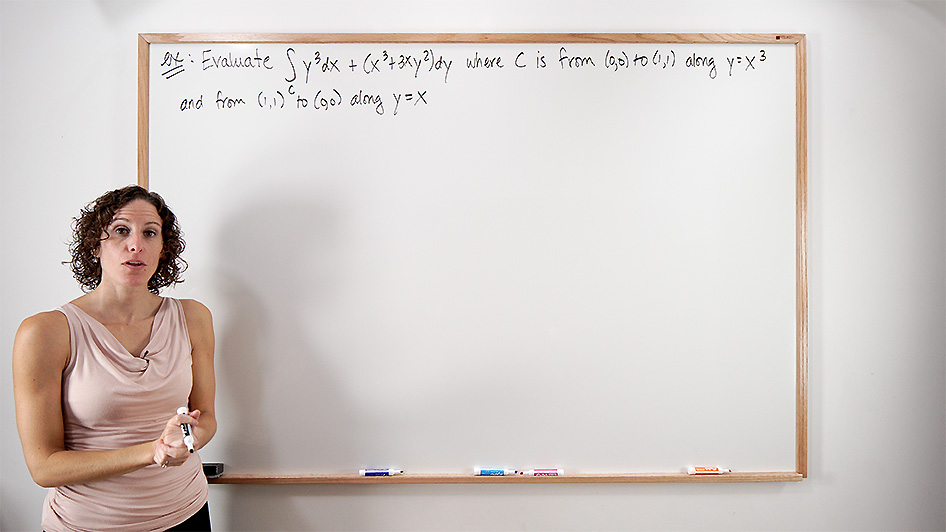
Get access to all the courses and over 450 HD videos with your subscription
Monthly and Yearly Plans Available
Still wondering if CalcWorkshop is right for you?
Take a Tour and find out how a membership can take the struggle out of learning math.
